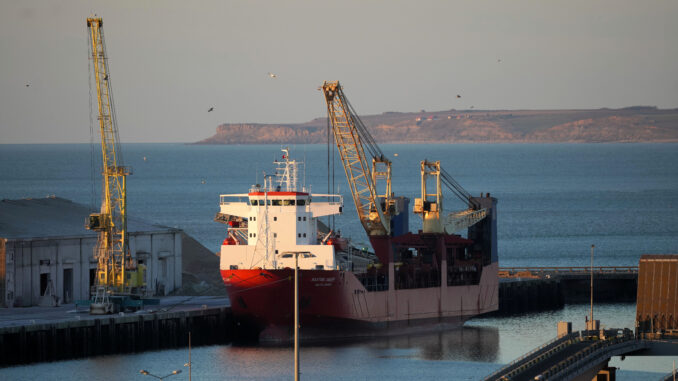
President Joe Biden has extended a ban on Russian vessels entering United States ports, imposed 2022 in response to the invasion of Ukraine.
Biden issued the ban April 21, 2022, through a national emergency declaration. “The policies and actions of the Government of the Russian Federation to continue the premeditated, unjustified, unprovoked, and brutal war against Ukraine continue to constitute a national emergency by reason of a disturbance or threatened disturbance of international relations of the United States”, Biden said in a statement this week.
“Therefore, in accordance with section 202(d) of the National Emergencies Act (50 U.S.C. 1622(d)), I am continuing for 1 year the national emergency with respect to the Russian Federation and the emergency authority relating to the regulation of the anchorage and movement of Russian-affiliated vessels to United States ports set out in Proclamation 10371”.
Otherwise, the emergency declaration would have expired within 90 days before its April anniversary, as provided for by the law.
Affected ships are those that are registered in Russia; owned by the Russian government, a Russian company, a Russian citizen or a permanent resident in Russia; or operated by a Russian entity, meaning that entity has control over commercial decisions.
The prohibition excepts, per the proclamation text, “Russian-affiliated vessels used in the transport of source material, special nuclear material, and nuclear byproduct material for which, and for such time as, the Secretary of Energy, in consultation with the Secretary of State and the Secretary of Commerce, determines that no viable source of supply is available that would not require transport by Russian-affiliated vessels”.
Also allowed for entry are “Russian-affiliated vessels requesting only to enter United States ports due to force majeure, solely to allow seafarers of any nationality to disembark or embark for purposes of conducting crew changes, emergency medical care, or for other humanitarian need”.
Besides the docking ban Washington is also keeping an eye out for tankers carrying Russian oil priced above war-induced caps that have been imposed by Australia, the European Union and the Group of Seven.
As part of efforts to deprive Russia of funds that it could use in its war in Ukraine, the price caps were rolled out December 5, 2022. The caps started at $60 a barrel for Russian crude before expanding to include refined products with limits of up to $100 per barrel. The caps for refined petroleum products have taken effect since February 5, 2023.
Last October the price cap alliance launched the “second phase” of the price cap regime in response to, as they claimed, Russian “shadow fleets” and fraudulent practices by Russia against service providers.
“In summer and fall 2023, the Kremlin exported more of its oil via a ‘shadow fleet,’ an infrastructure of ships, insurers, and other service providers with opaque ownership structures and a history of sanctions evasion activities”, Treasury Assistant Secretary for Economic Policy Eric Van Nostrand and Acting Assistant Secretary for Terrorist Financing and Financial Crimes Anna Morris said in a statement February 23, 2024, reviewing the impact of the sanctions.
“At the same time, the Kremlin and its proxies developed new ways to defraud Coalition service providers and take advantage of their services”, added the statement posted on the U.S. Treasury website.
“Driven by these factors and price increases in the world oil market, the average price that Russia earned on its oil rose above the cap.
“In response, in October 2023, the Coalition launched the price cap’s second phase with a two-pronged approach: to tighten enforcement of the price cap for trades that used Coalition services while increasing the costs to the Kremlin of selling oil via this alternative shipping ecosystem”.



